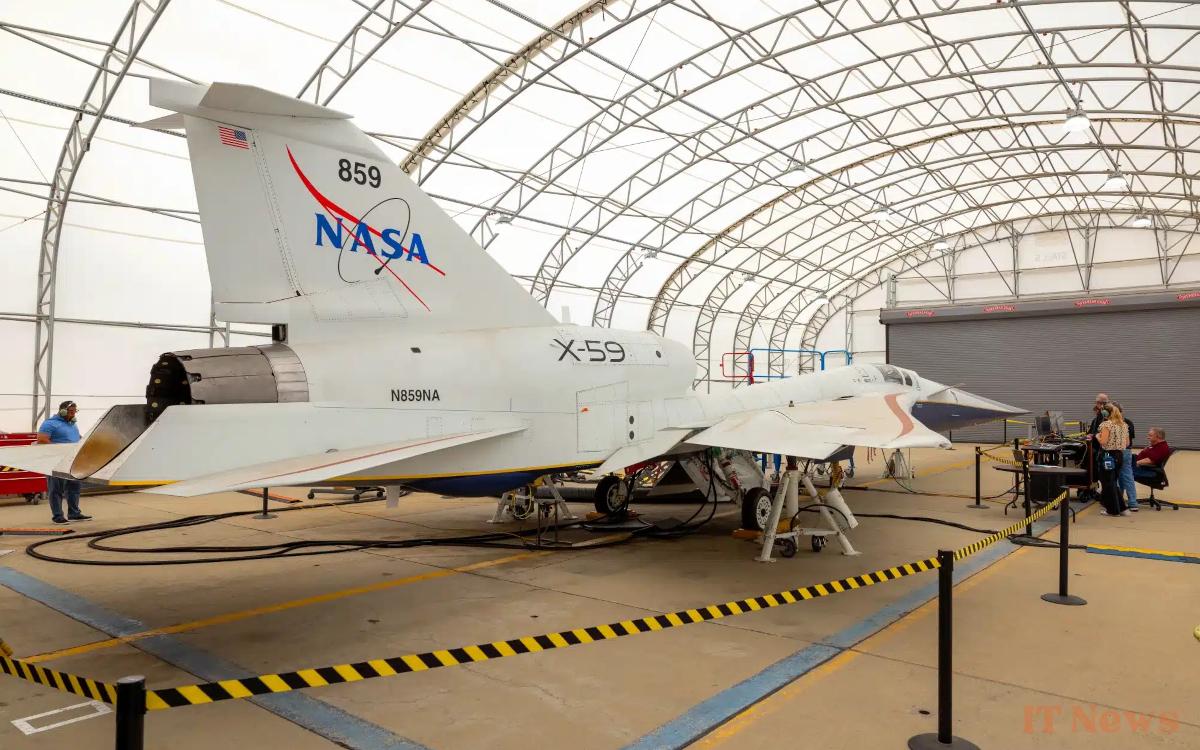A strange aircraft was tested as if it were flying... even though it wasn't moving. NASA is developing a device capable of breaking the sound barrier without making a bang. Testing has just begun in a hangar in the United States.
When we think of NASA vehicles, we often imagine the space shuttle returning from a mission, or more recently, the Orion capsule designed to take astronauts back to the Moon. For many, this enterprise rhymes with space and the stars. However, the American agency is also developing very special aircraft, firmly anchored to Earth.
This is the case of the X-59, an experimental jet designed to fly faster than sound without generating the usual sound boom. The aircraft, developed with Lockheed Martin, has just passed a series of unprecedented tests, dubbed the “aluminum bird”. According to NASA, these tests allow simulating a complete flight without ever leaving the ground.
NASA simulates the flight of the X-59 at Mach 1.5 without firing the engine
The X-59 was designed for NASA's Low-Boom Flight Demonstrator project. Thanks to its thin, elongated shape and front wings called canards, it should limit noise on the ground when breaking the sound barrier. Measuring 30.4 meters long with a wingspan of 9 meters, it uses already existing components. Its cockpit comes from a T-38 military trainer, while its landing gear comes from a well-known US military fighter jet, the F-16, which is briefly seen in the latest Top Gun movie. The engine, a General Electric F-414, should allow it to reach up to Mach 1.5, or about 1,590 km/h, at an altitude of 16,800 meters. For the recent tests, engineers activated all systems except the engine. The plane remained stationary in a Lockheed Martin hangar in Palmdale, California, USA. The goal was to test its behavior as if it were flying: pilot controls, reactions to changes in altitude or temperature, and even simulated failure management. This method, inspired by “iron bird” tests, makes it possible to verify the proper functioning of all components. Since the X-59 is unique, NASA preferred to use it directly to reduce costs.




0 Comments